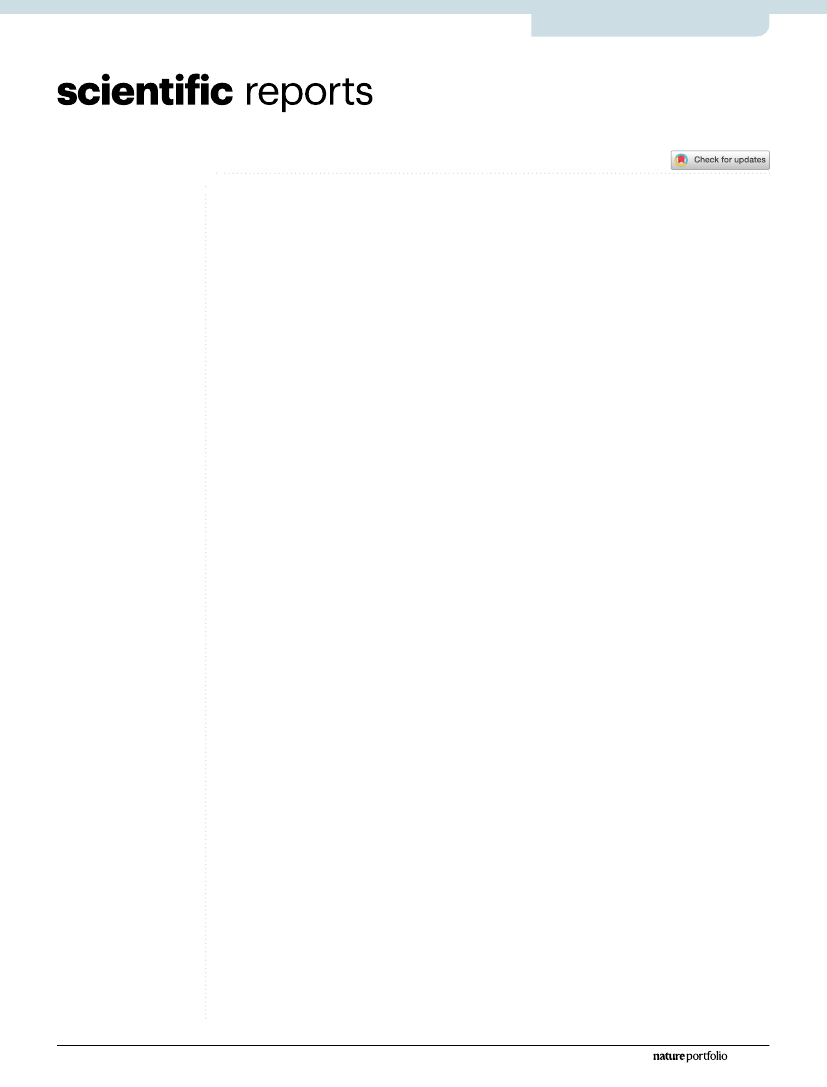
www.nature.com/scientificreports
OPEN
Occupational exposure
and markers of genetic damage,
systemic inflammation and lung
function: a Danish cross‑sectional
study among air force personnel
Maria Helena Guerra Andersen , Anne Thoustrup Saber , Marie Frederiksen ,
Per Axel Clausen , Camilla Sandal Sejbaek , Caroline Hallas Hemmingsen , Niels E. Ebbehøj ,
Julia Catalán
,
, Kukka Aimonen , Joonas Koivisto
,
, Steffen Loft , Peter Møller &
Ulla Vogel
,
*
Air force ground crew personnel are potentially exposed to fuels and lubricants, as raw materials,
vapours and combustion exhaust emissions, during operation and maintenance of aircrafts. This study
investigated exposure levels and biomarkers of effects for employees at a Danish air force military
base. We enrolled self‑reported healthy and non‑smoking employees n =
and grouped them by
exposure based on job function, considered to be potentially exposed aircraft engineers, crew chiefs,
fuel operators and munition specialists or as reference group with minimal occupational exposure
avionics and office workers . We measured exposure levels to polycyclic aromatic hydrocarbons
PAHs and organophosphate esters OPEs by silicone bands and skin wipes PAHs only as well
as urinary excretion of PAH metabolites OH‑PAHs . Additionally, we assessed exposure levels of
ultrafine particles UFPs in the breathing zone for specific job functions. As biomarkers of effect, we
assessed lung function, plasma levels of acute phase inflammatory markers, and genetic damage
levels in peripheral blood cells. Exposure levels of total PAHs, OPEs and OH‑PAHs did not differ
between exposure groups or job functions, with low correlations between PAHs in different matrices.
Among the measured job functions, the UFP levels were higher for the crew chiefs. The exposure
level of the PAH fluorene was significantly higher for the exposed group than the reference group
. ± . ng/g per h vs . ± . ng/g per h, p = .
, as was the OPE triphenyl phosphate
±
vs . ± . ng/g per h, p = .
. The OPE tris , ‑dichlor‑ ‑propyl phosphate had
a higher mean in the exposed group
. ±
ng/g per h compared to the reference group
. ± . ng/g per h but did not reach significance. No evidence of effects for biomarkers of
systemic inflammation, genetic damage or lung function was found. Overall, our biomonitoring study
show limited evidence of occupational exposure of air force ground crew personnel to UFPs, PAHs and
OPEs. Furthermore, the OH‑PAHs and the assessed biomarkers of early biological effects did not differ
between exposed and reference groups.
The National Research Centre for the Working Environment, Lersø Parkallé
,
Copenhagen Ø,
Denmark. Department of Occupational and Environmental Medicine, Bispebjerg University Hospital,
Bispebjerg Bakke
,
Copenhagen, NV, Denmark.
Finnish Institute of Occupational Health,
P.O. Box ,
Työterveyslaitos, Helsinki, Finland.
Department of Anatomy, Embryology and Genetics,
University of Zaragoza,
Zaragoza, Spain. ARCHE Consulting, Liefkensstraat
D,
Wondelgem,
Belgium.
Department of Public Health, Section of Environmental Health, University of Copenhagen, Øster
Farimagsgade A,
Copenhagen K, Denmark.
Department of Health Technology, Technical University of
Denmark,
Kgs, Lyngby, Denmark.
*
email: [email protected]
Scientific Reports
|
(2021) 11:17998
|
https://doi.org/
.
/s
-
-
-
Vol.: